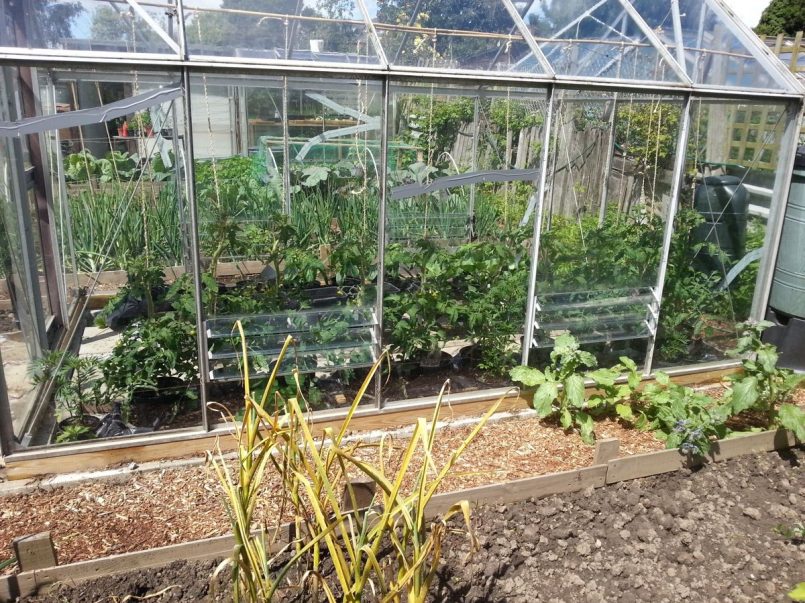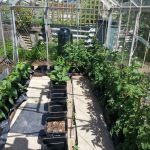One problem with having a greenhouse or polytunnel is that you need to water the plants regularly. This can be awkward, especially when your garden is an allotment over a mile away, or you are away from home. This is where automatic watering systems can save you time. We have tried various watering systems with mixed results, from fabric wick systems to ring culture, from automatic irrigation to bucket wicks. Continue reading for an overview of the watering systems we have tried and tested in our greenhouse and polytunnel.
Fabric wick watering systems
When we started our allotment, we had a 6ft by 8ft greenhouse. We soon bought a filter feed system consisting of two troughs and a closed bucket, all connected by pipes. We placed the plants inside compost-filled pots alongside a piece of fabric that acted as a wick. This wick extended from the roots down to a reservoir of water beneath. Through capillary action, the wick supplied water to the plant.
We had relative success in the first year, however the second year required buying new filter wicks which, being a Yorkshire man, definitely rubbed against the grain. So, because we had also just purchased a larger 8ft by 12ft greenhouse, we decided to look for a better (and cheaper) system.
Ring culture
We replaced the fabric wicks with a ring culture system. Ring culture consists of bottomless plant pots placed on top of pebble-filled troughs. We lined the troughs with plastic sheeting and then filled them with a layer of pebbles.
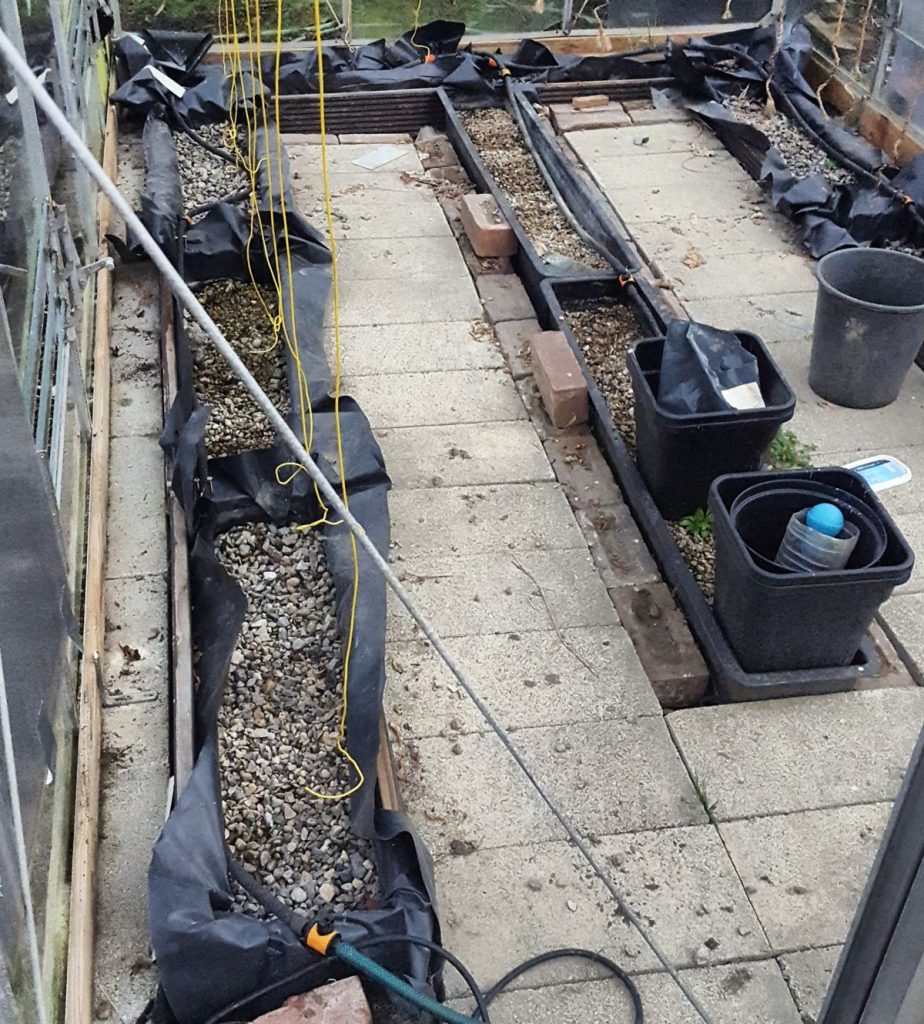
We placed the plants deep inside the compost-filled bottomless pots and kept watering the pebbles. The plants’ roots quickly reach down to access the water and gradually spread amongst the pebbles, taking in the water when they need it.
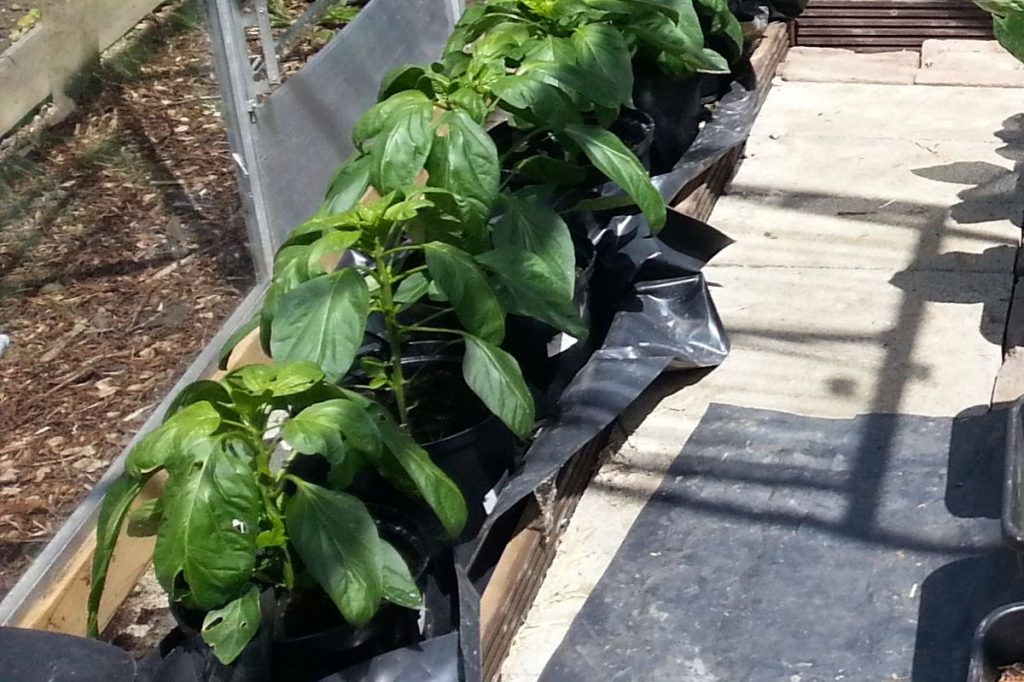
We used ring culture for many years with great success, but holidays caused problems because the plants still needed regular watering and feeding. Furthermore, our allotment uses shared water taps and so cannot stay connected, ruling out the possibility of any drip feed coming from the main water supply.
Water butts and automatic irrigation
We set up a water butt to collect the rainwater at the end of the greenhouse, so that we were not dependent on the mains supply. Next, we installed a battery-powered timer to regulate the delivery of the water to each trough through irrigation pipes. Irrigation pipes have tiny holes along the length of the pipe, which allowed the water from the water butt to drip onto the pebbles. This was set on a timer to drip for a certain amount of time and at regular intervals.
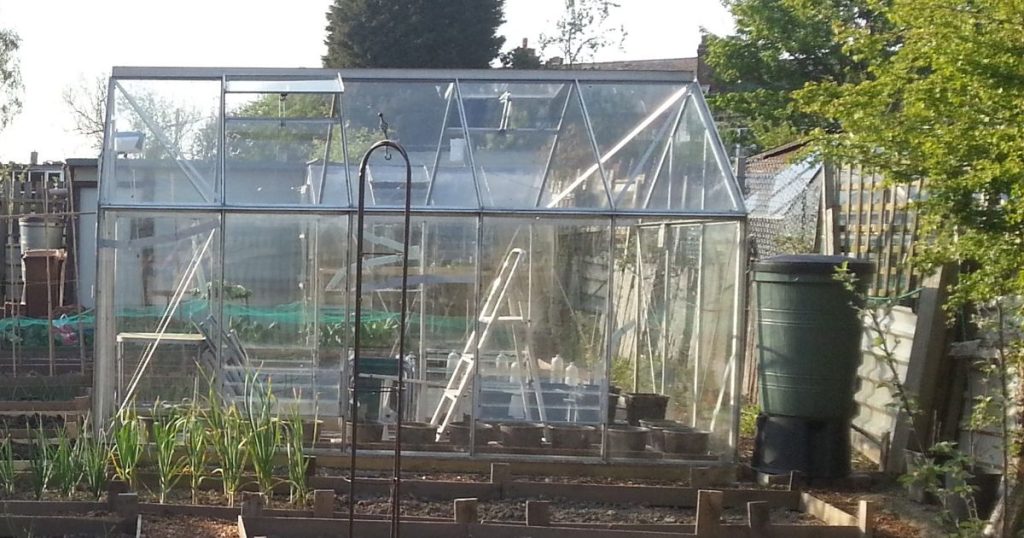
The combination of water butt and irrigation pipes worked very well and gave us a couple of weeks of freedom during the early growing period, but feeding was still a problem in the later fruiting season.
From greenhouse to polytunnel
Then disaster! Some local cherubs (I am sure their mothers must love them) decided it would be fun to throw stones at our greenhouse. In fact, they found it so much fun that they broke every pane of glass on one side of the greenhouse and all the panes in the roof. They also damaged plants inside. Luckily, the tomatoes had reached the end of their growing season, but the ginger plants, that we were growing for the first time, had broken.
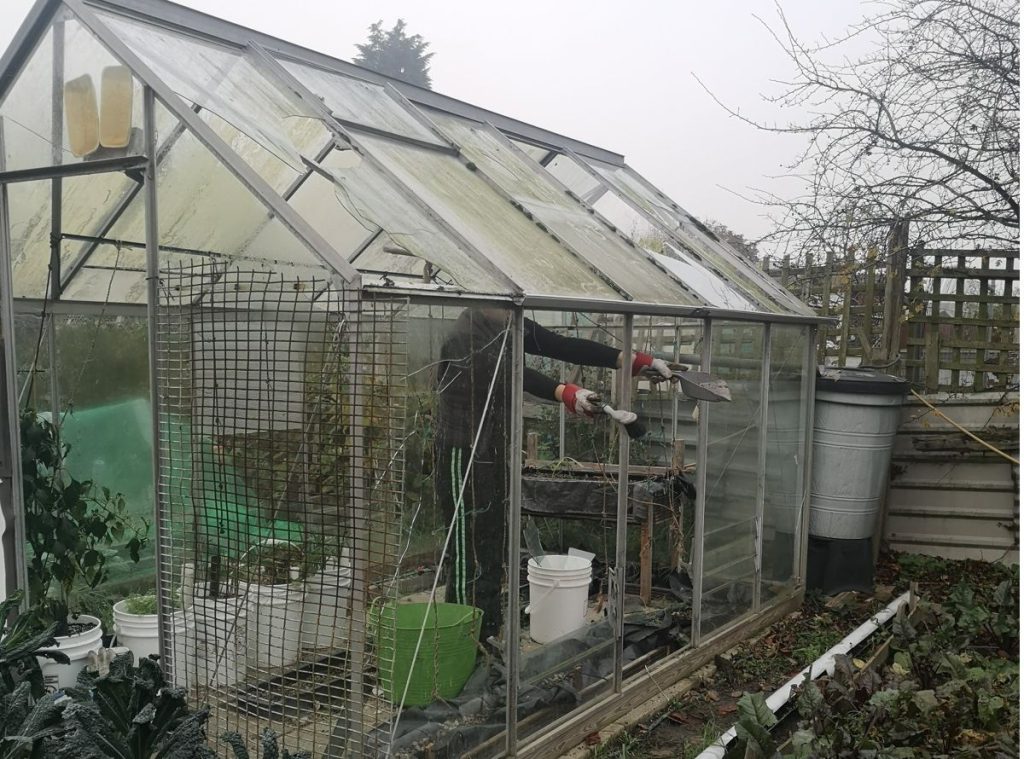
So, after a great deal of thought over the winter of 2020, we decided to give away the remnants of the greenhouse and buy a polytunnel. After watching some videos, we decided on a 3m by 8m polytunnel. We ignored the in-built zips and built a proper door at one end and a window at the other.
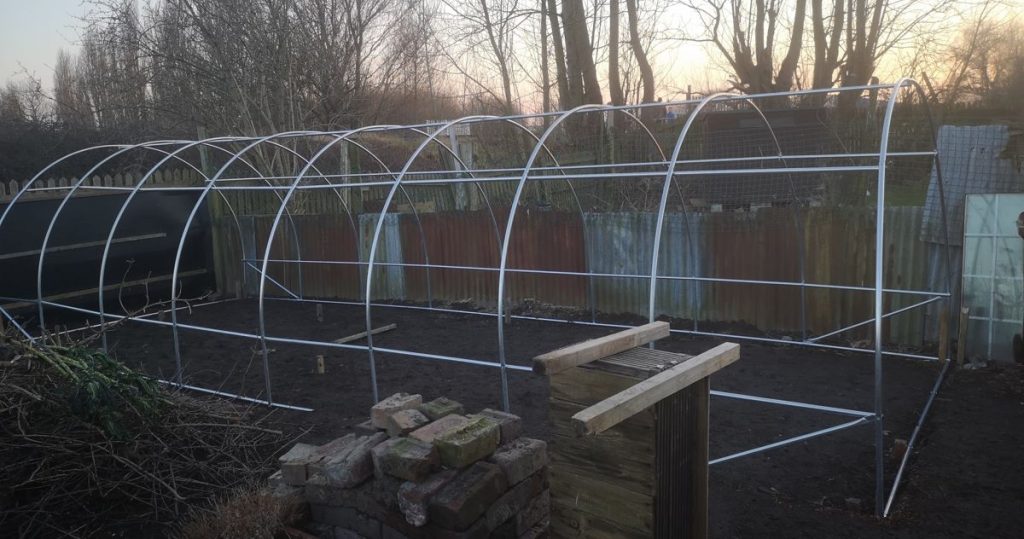
Bucket wick watering systems
To accommodate a greater number of plants in our larger polytunnel, we changed to a bucket wick system. This is proving quite successful, both inside and outside.
We acquired some large, strong containers and placed shortened plastic milk cartons upside down in the base. Two 6-pint cartons and one 4-pint carton fitted perfectly inside our containers leaving space in the middle and at the side. We added a piece of plastic piping into a side gap that was long enough to extend above the container. After drilling a hole through the side of the container and into one of the 6-pint milk cartons, we pushed some thinner pipe through to act as a drain.
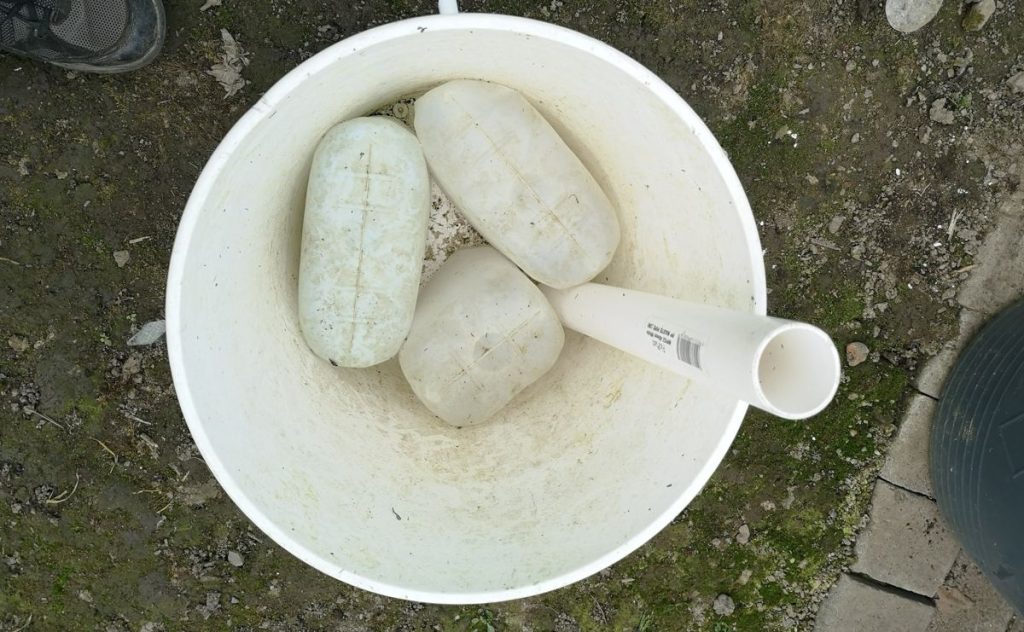
We then added coir to fill the gaps in the middle and around the milk cartons.
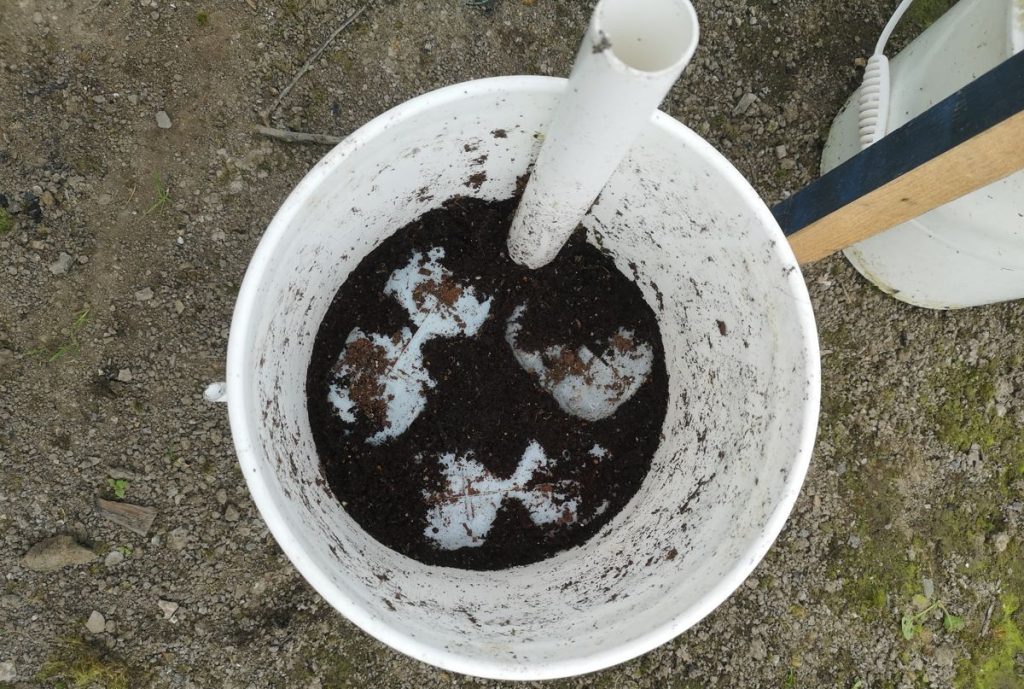
We filled the rest of the container with a mixture of compost and perlite. The cartons store the water, the coir acts as a wick transporting the water up to the plant, the compost provides nutrients, and the perlite promotes air circulation.
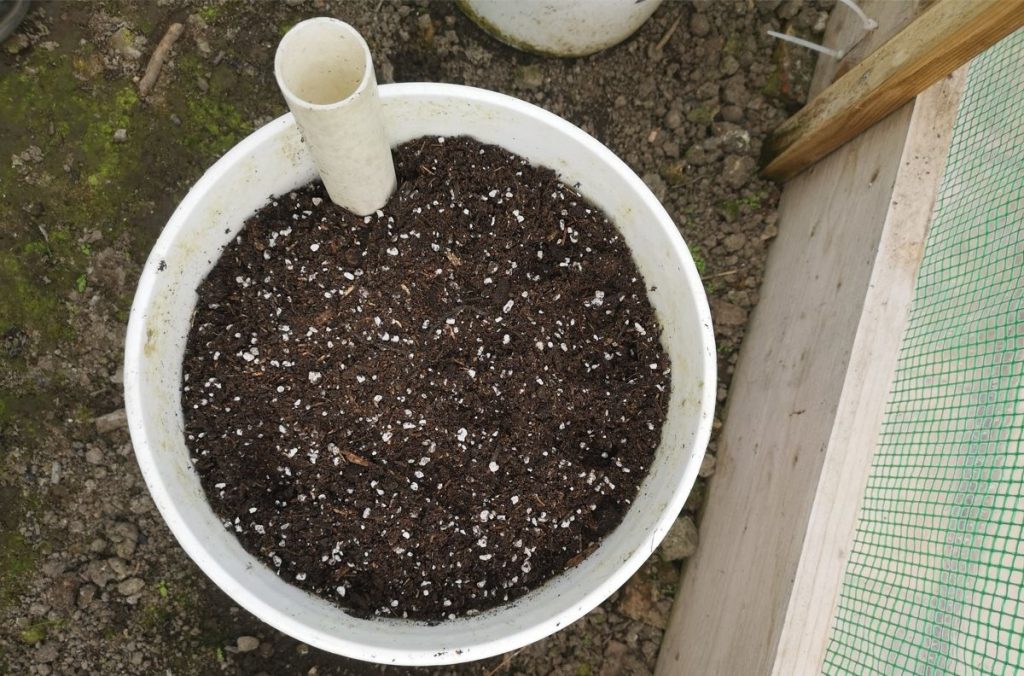
The bucket wick system has worked well so far, making it easier to water without wetting the plants, and the plants can take in water as they need it. However, controlling the temperature in the polytunnel on a day-to-day basis has been difficult, as leaving the doors open at night can expose the plants to sharp drops in temperature.
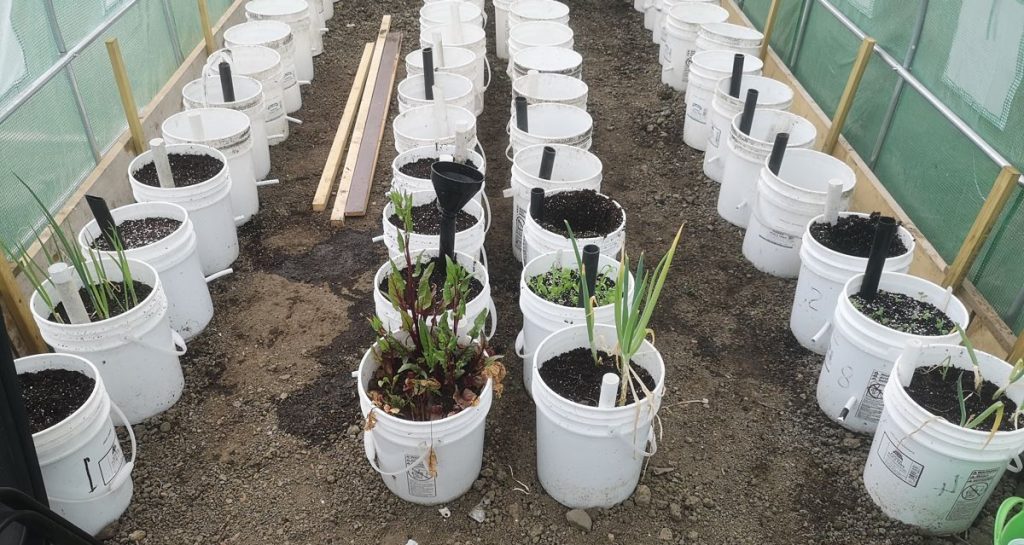
Next year we intend to continue with the bucket wick watering systems but improve it by implementing an automatic top-up and drain arrangement. Watch this space…
